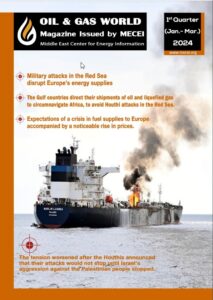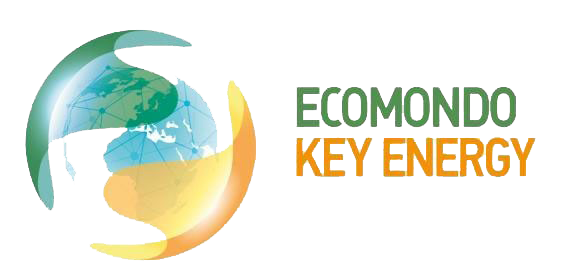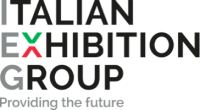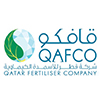- QatarEnergy selects Nakilat to own and operate 25 conventional LNG vessels
- The joint development of the Dorra field between Saudi Arabia and Kuwait is pending the demarcation of the border with Iran
- Minister of Energy reaffirms the UAE’s commitment to adopting clean energy and supporting the Paris Agreement
- The new Hassi Messaoud refinery enjoys the support of the government and President Tebboune
- Increasing electrical interconnection capacities to export electricity beyond borders
- Qatar Energy stops sending liquefied gas tankers through the Red Sea for security reasons
- The inauguration of the Duqm Refinery, the largest joint Gulf project in the refinery sector
- Saudi oil exports are faltering due to Houthi attacks on ships in the Red Sea and Gulf of Aden
- Algeria to host and chair the Gas Exporting Countries Forum summit (February 29 to March 2, 2024)
- Egypt Energy Conference and Exhibition 2024 gives a strong impetus to the global energy dialogue

Energy Situation in Netherlands
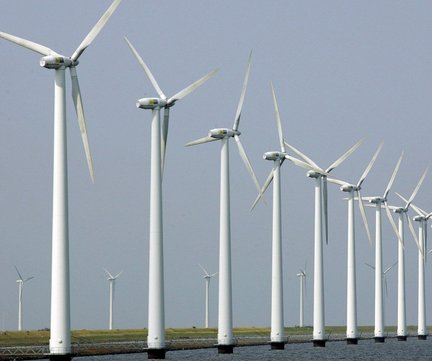
The National Day of Netherlands Kingdom (15TH December):
The Oil and Gas World Magazine has prepared this report, using some publications officially obtained from the Embassy of the Kingdom of the Netherlands in Cairo, to be published in the magazine on the occasion of Holland National Day.
Oil and Gas World Magazine seizes the opportunity to congratulate His Excellency the Ambassador of the Kingdom of the Netherlands in Cairo, the members of the embassy and the Dutch people for this supreme occasion (the anniversary of signing of the Charter of the Kingdom in 1954), wishing them all more prosperity and progress.
Energy Situation in Netherlands
The Dutch, just like other peoples, do not like to stop their cars in traffic jams. But a row of oil tankers waiting in front of the Dutch coast to unload their cargo at Rotterdam port is one of the few traffic jams that make the Dutch proud.
In fact, the Netherlands is the second largest global importer and exporter of petroleum products, and one-third of the crude oil transported to Europe is received in Rotterdam. This figure confirms the privileged mode enjoyed by Rotterdam in Europe. This fills the Dutch with pride.
The Golden Jubilee for Gas Production
The largest gas field, drilled in Western Europe, was discovered since more than 50 years. This great discovery was carried out in 29th May, 1959 in the Netherlands under a farmer’s field. Every year an approximately 30 billion cubic meters of gas are extracted from Slochteren field and 68 billion cubic meters are totally extracted from all Dutch gas fields. The total reserves are estimated at 1.572 billion cubic meters, which is about 25% of the total European gas reserves. At the present time, the gas is still extracted from the gas fields and this is expected to continue over the next 50 years.
IN 2009, NAM Company, the largest gas producer in the Netherlands, has produced a total of 53.3 billion cubic meters of natural gas.
One of the largest gas fields in the world is located in the Netherlands and contains 2800 billion cubic meters, of which 60% have been already produced. The Netherlands is ranked the sixth in the world in the producers’ list and the seventh in the natural gas exporters’ network.
Gas Transportation
The Netherlands also is considered one of the largest gas carriers in Europe. This began with the discovery of a huge gas field in Khozrnngen. Then the installation of a 12.000 km pipeline began, which is one of the largest high pressure networks in Europe. This pipeline is now connected to international networks, thereby becomes the center of the large gas flows.
Two-thirds of the flowing gas in our pipelines is allocated to foreign clients. In addition, the Netherlands could face seasonal fluctuations in gas demand and thus provides the necessary “flexibility” to supply customers in northwest Europe. With the soon completion of the establishment of huge plants for liquefied natural gas, Netherlands will be able to receive gas from the countries that are not connected through pipelines. This expertise enabled led to obtain a vast amount of information, which reflected in the establishment of the scientifically memorable institute “the Energy Delta Institute – EDI”.
In partnership with Royal Vopak Company, Gasunie Company constructs the first Dutch station to receive liquefied natural gas in Rotterdam where a total of 12 billion cubic meters of liquefied natural gas can be stored with the possibility of expanding the unit capacity to 16 billion cubic meters.
Oil – Production and Refining
In addition to gas, oil is extracted. Rotterdam port plays a major role as it is the most important port in Europe, and more than 100 million tons of oil passes through it to refineries in northwest Europe. The port contains five international oil refineries, more than forty petrochemical companies, three industrial gases’ producers and thirteen companies for storage and distribution. Almost all of these companies are connected together through a pipeline network extending for more than 1500 km.
The Shell Pernis refinery is the largest refinery in Europe, where 403 thousand barrels of crude oil are refined per day. And the petroleum port in the MOT area in Rotterdam is one of the largest oil ports in the world. The giant tankers, whose capacities exceed 400.000 dry tons, can anchor here with a depth of more than 22 meters.
Pipelines and heavy transport
The installation of pipelines is a Dutch specialty. The market leader is “Contractors All Seas Marine Company” which has, for the first time in the world, introduced the ship of pipe fitting (Lorelay) that selects installation sites in a dynamic way. Both Boskalis and Van Oord Companies are deployed to get rid of sand dunes and hills impeding the pipes’ installation, covering and fixation.
Besides, Netherlands is internationally active regarding heavy marine transport. The market leader is (Dockwise) Company which owns a fleet consisting of 20 semi-submersible heavy cranes. There are also the heavy transport vessels of (Biglift Shipping) and (Jumbo Shipping) Companies. They transfer the heavy components related to offshore industries and petrochemical industries. Moreover, Mammoth Transport Company owns a fleet of lifting units, trailers, and self-lifting platforms.
Offshore Operations
Either major or secondary activities, one will find the Dutch companies active all the time. For example, Fugro Company, carries out earthquakes researches at the bottom of the soil, and owns a complete fleet of seabed research vessels. Besides, the Netherlands plays a leading role in designing offshore drilling rigs.
HSM Offshore, Mercon, Nami, and Heerema Group are producing manufactured production platforms which perform its work in various parts of the world. Of course, you must install platforms by using giant leverages, and the global market leader in this area is Heerema Marine Contractors (HMC) inter alia what is owned by Thialf, the most powerful leverage in the world. As for Seaway Heavy Lifting Company, it will be given Oleg Strasnov, the largest single-hull leverage in the world and has a lifting capacity of 5000 tons.
The Netherlands giants towards the Gulf
The Netherlands enjoys many years of experience in the field of oil and gas extraction and it has developed itself to become the center of gas movement in Europe. All this experience engages itself with the needs in the Gulf Region within the frame of “Cooperation with a trusted partner can provide high-technology.”
According to a program, the energy sector in the gulf region will receive many visits from the Netherlands companies in the coming years. Raising the slogan of (the Dutch solutions for energy), the Dutch suppliers cooperate to find a way to present themselves in the markets of Saudi Arabia, the United Arab Emirates and neighboring countries. The program is an initiative of the relevant Businessmen Association with other bodies, and financed by the Ministry of Economic Affairs.
The gas axis to North Western Europe
The strategic location of the Netherlands, the possibility of gas storage in the soil, and the presence of Gasunie network and the various links with distribution networks in neighboring countries form the core of the so-called “the gas axis” in the north western Europe, makes of Netherlands the meeting point and the center of natural gas distribution in northwestern Europe. The Gasunie network is connected to gas networks in Belgium, the United Kingdom, Denmark and Norway and will be connected to Russia starting 2011.
Preparations are at their peak to complete the connection to the new pipeline to transport gas from Russia to Germany with the Northern pipeline. Gasunie expands its networks in the Netherlands and an approximately 500 miles of pipelines are being installed together with constructing new pressure stations. BBL pipeline delivers gas from the Netherlands to the United Kingdom and its capacity is currently being increased by installing a fourth pressure station. Besides, in the Netherlands there is the possibility of storage in empty gas fields and salt caves. In addition, a liquefied natural gas plant is being constructed in Rotterdam. In short, the Netherlands is struggling against time to convert its ambitions to a tangible reality in order to be the gas axis in north Western Europe.


